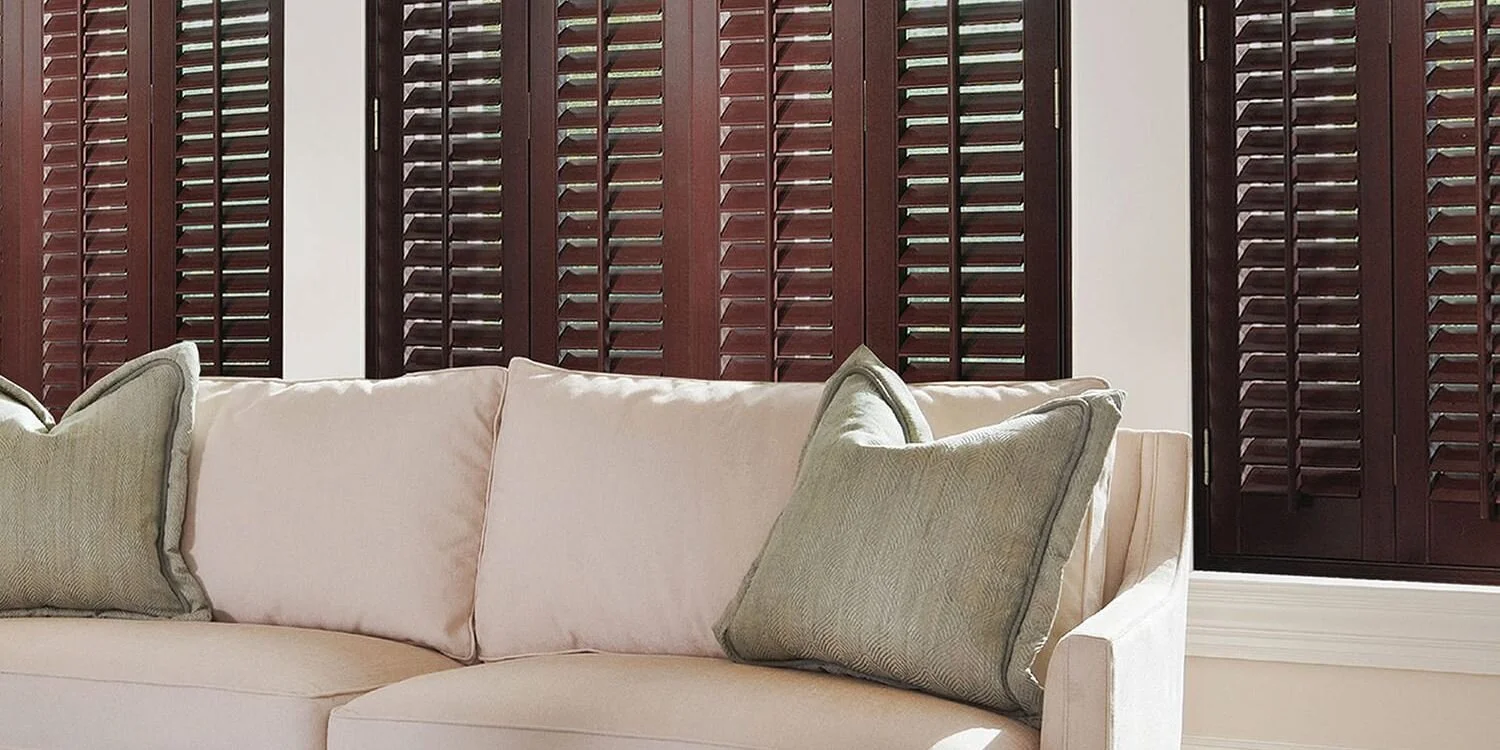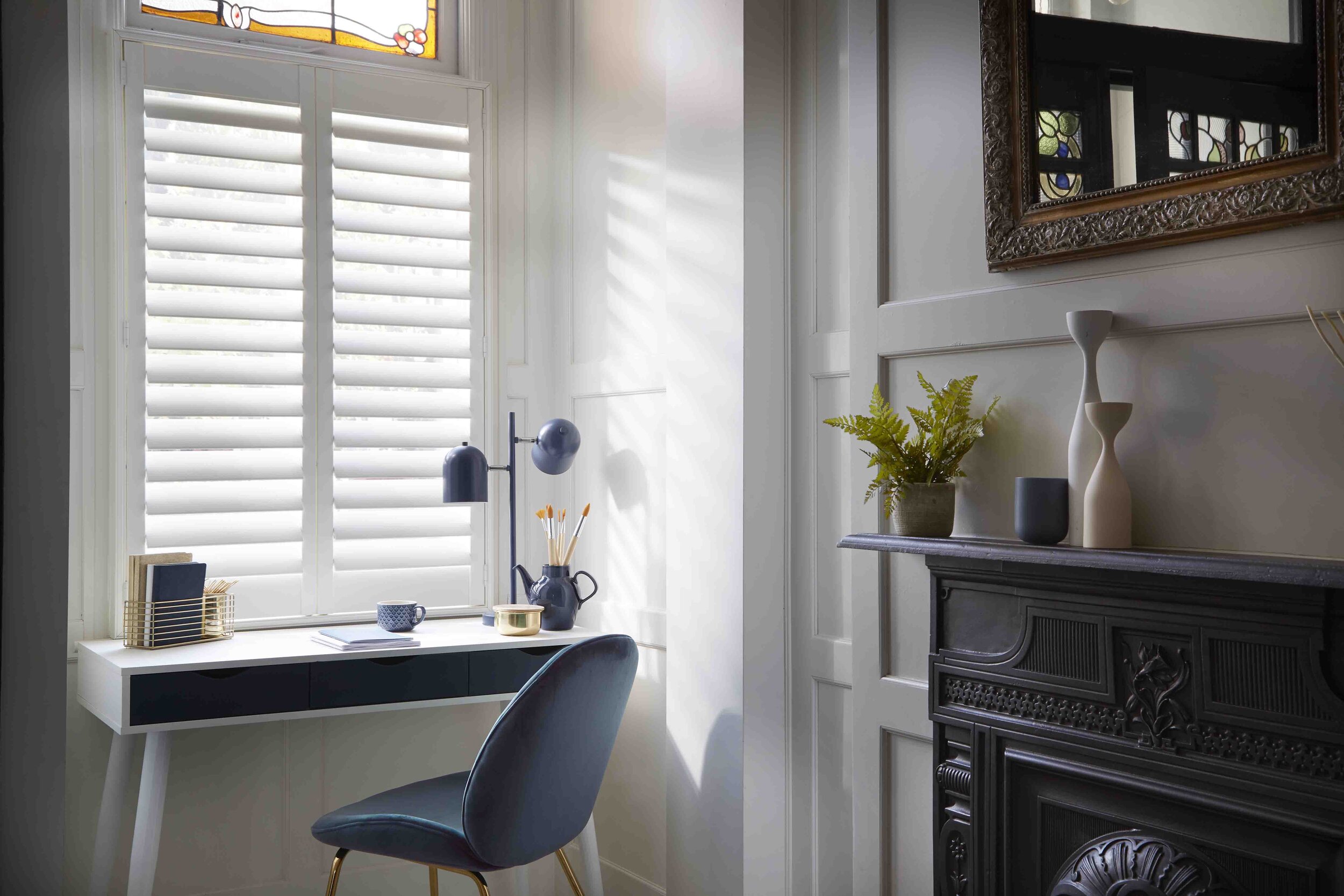HOW MUCH WILL MY SHUTTERS COST?
In just 3 simple steps get an instant price for your shutters. Select your shutter type, enter your rough measurements and hit go!
HOW MUCH WILL MY SHUTTERS COST?
In just 3 simple steps get an instant price for your shutters. Select your shutter type, enter your rough measurements and hit go!
Available in an unlimited range of paint and wood stain finishes, with the widest choice of frame options and louvre widths, the hardwood frame and louvres of the Wenlock range make this the ideal choice when colour choice is critical or when large or shaped shutters are required.
You can view the main features of the Wenlock range below. You can also try our quick quote to get a more accurate price for your shutters.
Once your happy or, if you want to talk through your options in more detail with one of our friendly staff, use our online booking system to make an appointment to come and see us at our Bridgnorth showroom or for an instant quote on your shutters please click below.
At a glance
Shutter Composition: Hardwood (engineered hardwood for painted finishes and “Virgin” hardwood for stained finish)
Louvre widths available: 47mm/63mm/76mm/89mm/114mm plus solid shutters
Colour range: 23 standard paint and 22 standard stains PLUS custom colour option
Tilting options: Centre or offset rod is standard. Hidden tilt available at aprox 10% premium NB: hidden tilt is not available with 47mm Louvre. Motorised tilt available.
Panel Configuration options: Single, bi-fold and multi-fold (up to 4 panels per side) Tracked shutters available
Suitable for shaped windows?: Yes. All shapes including slopes, curves, arches and circles. Non standard shapes will require templating.
Approximate lead time: 14-16 weeks (made in China). For shaped shutters Add 4 weeks.
NB: Not suitable for bathrooms.
Warranty: 3 years
Due to it’s lighter weight and “workability” the Wenlock range is best for shaped shutters, tier-on-tier and larger multi-panel shutters. However, hardwood, being softer than MDF or composite, is more easily marked and we wouldn’t recommend in high use areas, such as children’s rooms or for tracked door shutters.
Frequently asked questions
With bay/bow windows we custom make the bay corners and/or shaped batons to ensure a perfect finish. These cost more to produce plus these type of windows generally take a lot more time to install properly and often require two installers rather than one. Tier-On-Tier shutters have twice as many panels to manufacture/hang and take a lot longer to install properly. Both options, much more so than standard windows, need to be perfectly square (and most window openings aren’t!) and often require trim scribing in to achieve a quality finish. Put both together and there is even more work and time required. Tracked shutters have additional framing to accommodate the heavy duty track at the head and a guide track at the bottom to make sure the panels hang well and run smoothly. There are also deeper side frames and take longer to install (often requiring a two man fit).
A traditional shutter has a visible rod tilting the louvres. This can either sit in the centre of the panel or be offset to either side of the panel. Hidden tilt has a rack and pinion drive built in to the panel stile and isn’t visible. Clearview tilt has a discrete pivot strip linking the louvres mounted on the rear of the panel on one edge.
Rod tilt is your more “Classic” look and also suits older style houses while the hidden and Clearview has cleaner lines and best suits more modern houses. Hidden and Clearview tilt does make your shutter easier to clean but the classic rod tilt is actually more robust and easier to repair should it get damaged.





